
How to Use Random SSR 40A: Examples, Pinouts, and Specs
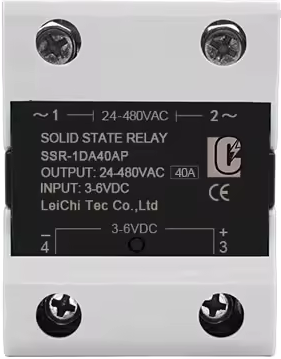
 Design with Random SSR 40A in Cirkit Designer
Design with Random SSR 40A in Cirkit DesignerIntroduction
The Random SSR 40A (Manufacturer: LCTC, Part ID: 1DA40AP) is a solid-state relay (SSR) designed for high-current switching applications. It is rated for a maximum load current of 40 amperes and is capable of switching AC loads without the use of mechanical components. Unlike traditional electromechanical relays, the SSR operates silently, offers faster switching speeds, and has a longer operational lifespan due to the absence of moving parts.
Explore Projects Built with Random SSR 40A
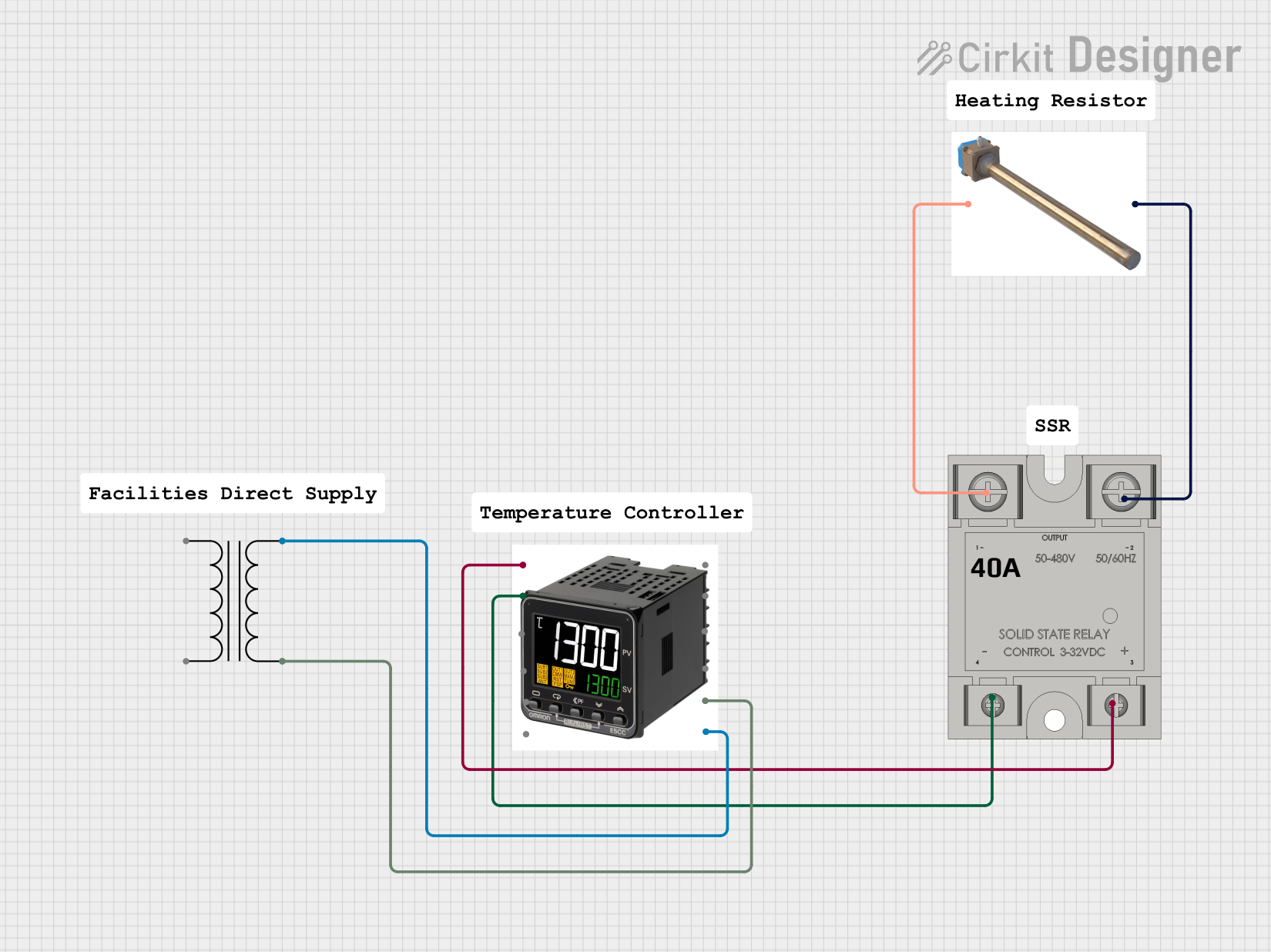
 Open Project in Cirkit Designer
Open Project in Cirkit Designer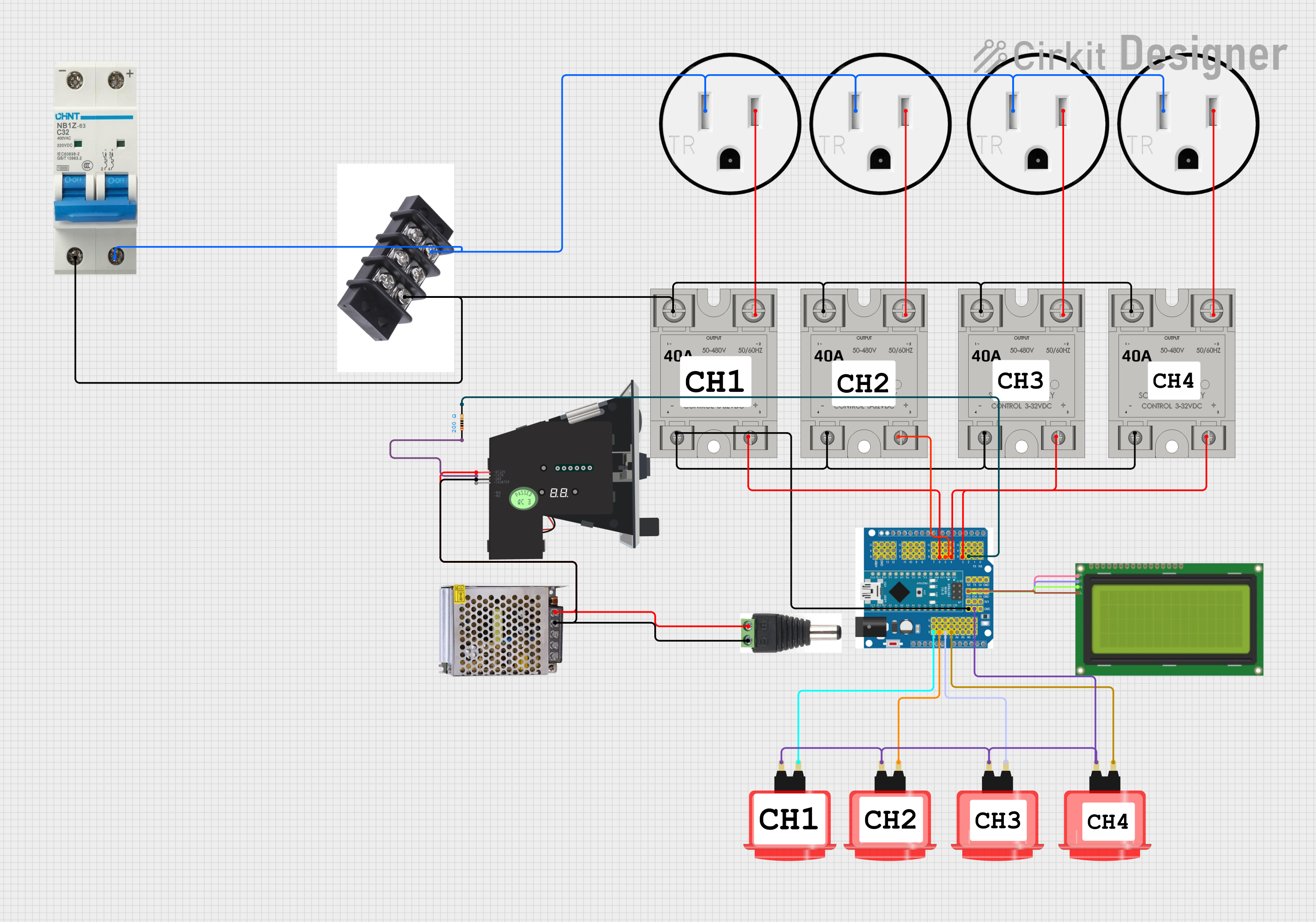
 Open Project in Cirkit Designer
Open Project in Cirkit Designer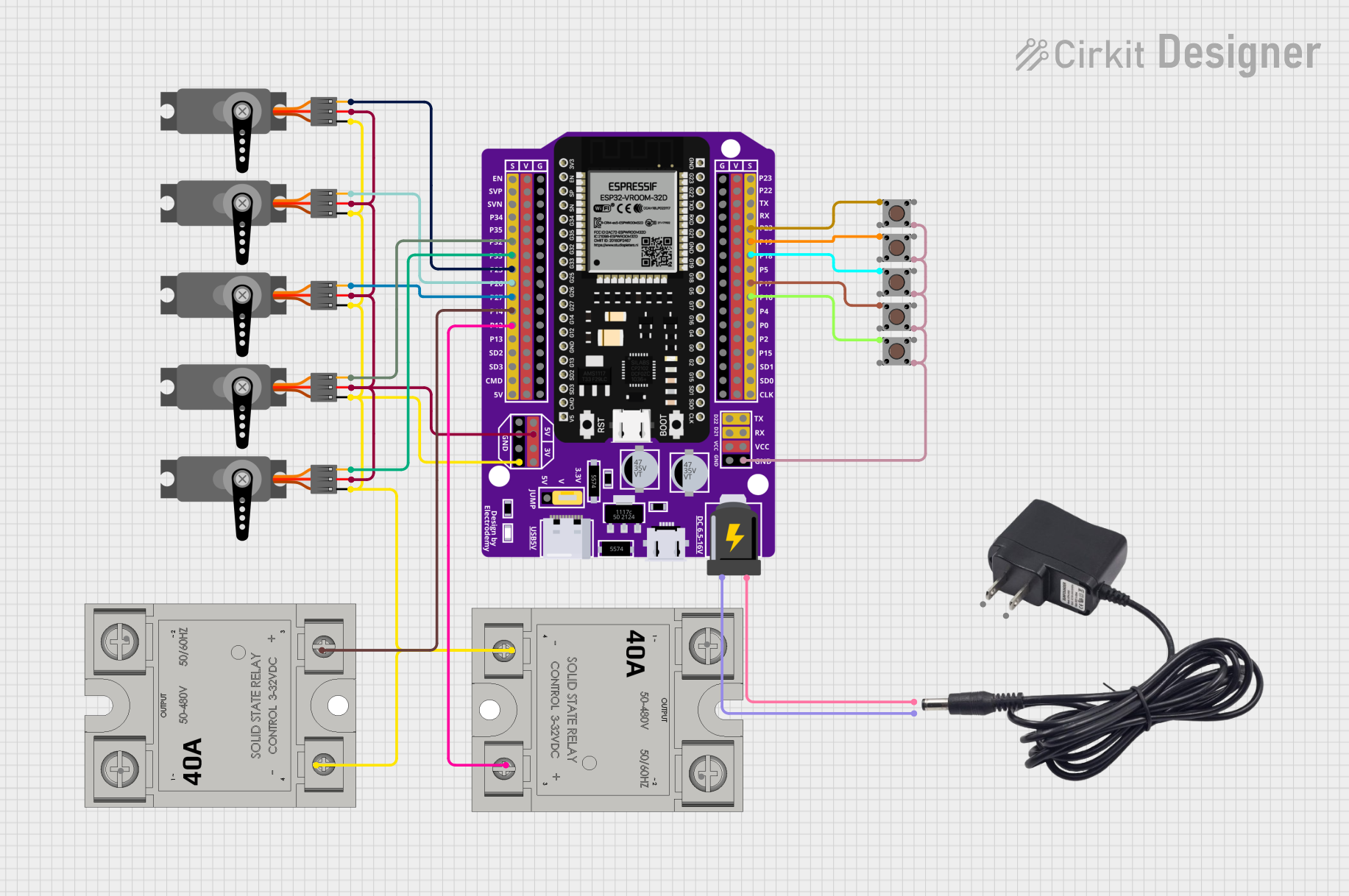
 Open Project in Cirkit Designer
Open Project in Cirkit Designer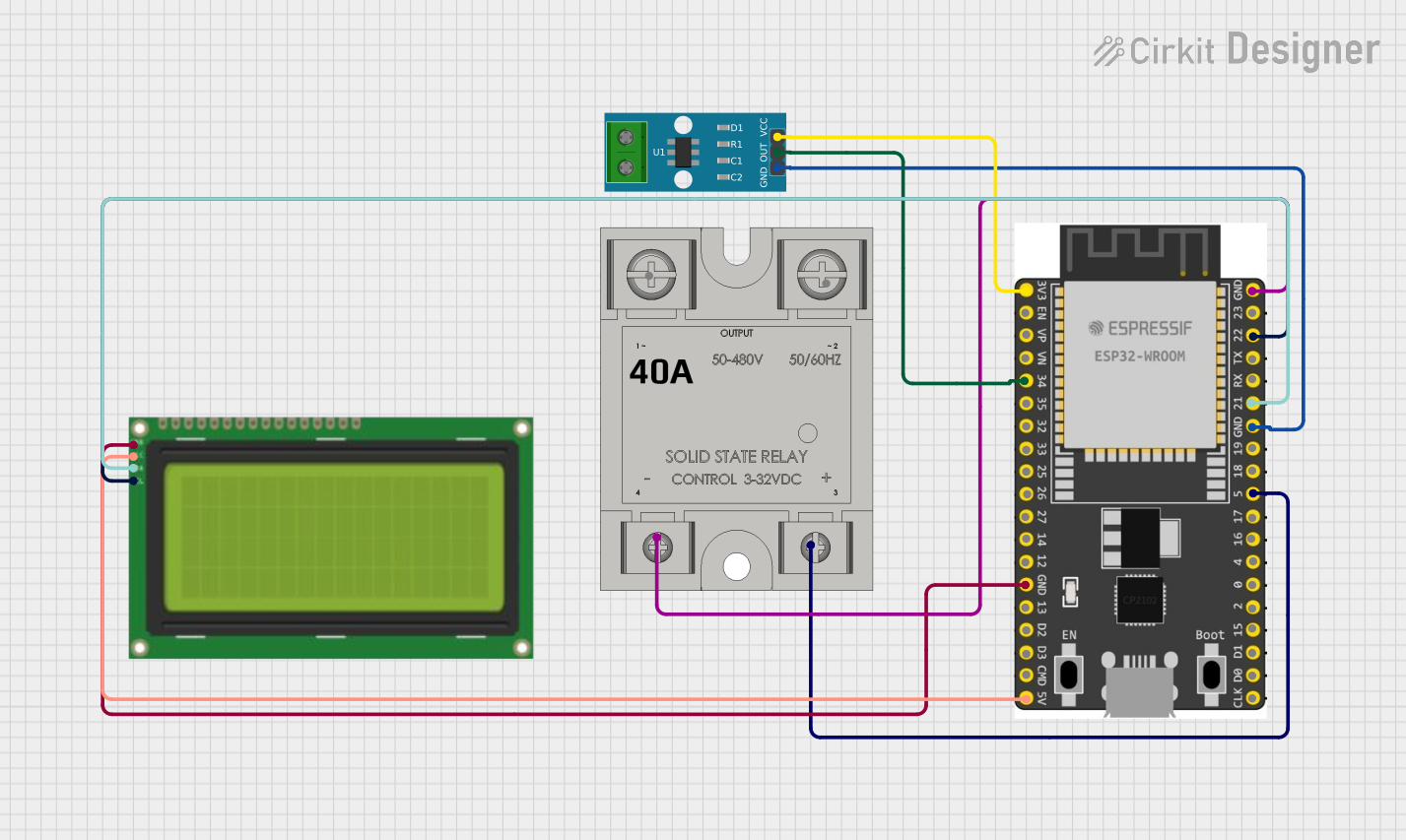
 Open Project in Cirkit Designer
Open Project in Cirkit DesignerExplore Projects Built with Random SSR 40A

 Open Project in Cirkit Designer
Open Project in Cirkit Designer
 Open Project in Cirkit Designer
Open Project in Cirkit Designer
 Open Project in Cirkit Designer
Open Project in Cirkit Designer
 Open Project in Cirkit Designer
Open Project in Cirkit DesignerCommon Applications and Use Cases
- Industrial automation and control systems
- Heating, ventilation, and air conditioning (HVAC) systems
- Motor control and lighting systems
- Home appliances and smart home devices
- Temperature control systems (e.g., PID controllers)
Technical Specifications
Key Technical Details
| Parameter | Value |
|---|---|
| Manufacturer | LCTC |
| Part ID | 1DA40AP |
| Load Voltage Range | 24V AC to 380V AC |
| Maximum Load Current | 40A |
| Control Voltage Range | 3V DC to 32V DC |
| Trigger Current | ≤ 7.5mA |
| On-State Voltage Drop | ≤ 1.5V |
| Isolation Voltage | ≥ 2500V AC |
| Operating Temperature | -30°C to +80°C |
| Switching Type | Random (non-zero crossing) |
| Mounting Type | Panel mount |
Pin Configuration and Descriptions
The SSR 40A has four terminals, as described below:
| Pin Number | Label | Description |
|---|---|---|
| 1 | Input (+) | Positive terminal for the DC control signal (3V to 32V DC). |
| 2 | Input (-) | Negative terminal for the DC control signal (ground). |
| 3 | Load (AC1) | One terminal of the AC load circuit. |
| 4 | Load (AC2) | The other terminal of the AC load circuit. |
Note: Ensure proper polarity for the input control signal and correct wiring of the AC load terminals.
Usage Instructions
How to Use the Component in a Circuit
- Control Signal Connection: Connect the DC control signal to the input terminals (Pin 1 and Pin 2). Ensure the control voltage is within the specified range (3V to 32V DC).
- Load Connection: Connect the AC load to the load terminals (Pin 3 and Pin 4). The load voltage must be within the range of 24V AC to 380V AC.
- Mounting: Secure the SSR to a heat sink or a metal surface using screws to ensure proper heat dissipation, especially for high-current applications.
- Power On: Apply the control signal to activate the relay. The load circuit will be completed, allowing current to flow through the load.
Important Considerations and Best Practices
- Heat Dissipation: Use a heat sink or cooling fan to prevent overheating during high-current operation.
- Isolation: Ensure proper electrical isolation between the control and load circuits to avoid damage to sensitive components.
- Random Switching: This SSR uses random (non-zero crossing) switching, making it suitable for inductive loads like motors but less ideal for purely resistive loads.
- Fuse Protection: Add an appropriate fuse or circuit breaker in series with the load to protect against overcurrent conditions.
- Avoid Overloading: Do not exceed the maximum load current (40A) or voltage (380V AC) to prevent damage to the relay.
Example: Using the SSR 40A with an Arduino UNO
Below is an example of how to control the SSR 40A using an Arduino UNO to switch an AC load.
// Example: Controlling an SSR 40A with Arduino UNO
// This code toggles the SSR on and off every 2 seconds.
const int ssrPin = 9; // Pin connected to the SSR control input
void setup() {
pinMode(ssrPin, OUTPUT); // Set the SSR pin as an output
}
void loop() {
digitalWrite(ssrPin, HIGH); // Turn the SSR on (AC load is powered)
delay(2000); // Wait for 2 seconds
digitalWrite(ssrPin, LOW); // Turn the SSR off (AC load is disconnected)
delay(2000); // Wait for 2 seconds
}
Note: Ensure the Arduino's output pin is connected to the SSR's input terminals (Pin 1 and Pin 2) with proper polarity. Use a resistor (e.g., 220 ohms) if needed to limit current.
Troubleshooting and FAQs
Common Issues and Solutions
SSR Does Not Switch the Load
- Cause: Insufficient control voltage or incorrect polarity.
- Solution: Verify that the control voltage is within the range of 3V to 32V DC and that the polarity is correct.
Overheating
- Cause: Excessive load current or inadequate heat dissipation.
- Solution: Ensure the load current does not exceed 40A. Attach a heat sink or cooling fan to the SSR.
Load Flickering
- Cause: Unstable control signal or loose connections.
- Solution: Check the control signal for stability and ensure all connections are secure.
No Isolation Between Control and Load Circuits
- Cause: Faulty SSR or improper wiring.
- Solution: Verify the wiring and replace the SSR if necessary.
FAQs
Q1: Can the SSR 40A be used with DC loads?
A1: No, the SSR 40A is designed for AC loads only. For DC loads, use a DC-specific solid-state relay.
Q2: What is the advantage of random switching?
A2: Random switching allows the SSR to turn on at any point in the AC waveform, making it suitable for inductive loads like motors and transformers.
Q3: How do I calculate the required heat sink size?
A3: Use the formula:
[
P = I^2 \times R_{on}
]
where (P) is the power dissipation, (I) is the load current, and (R_{on}) is the on-state resistance. Select a heat sink that can dissipate this power.
Q4: Can I use the SSR 40A for dimming lights?
A4: No, the SSR 40A is not suitable for dimming applications. Use a phase-controlled SSR for such purposes.